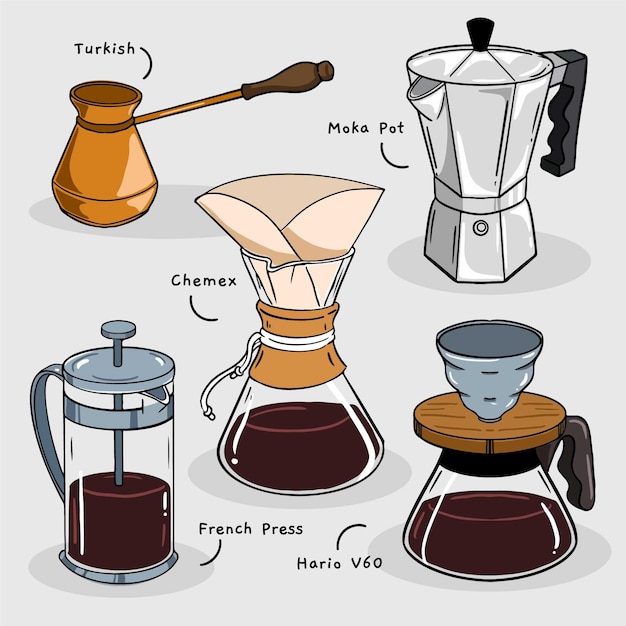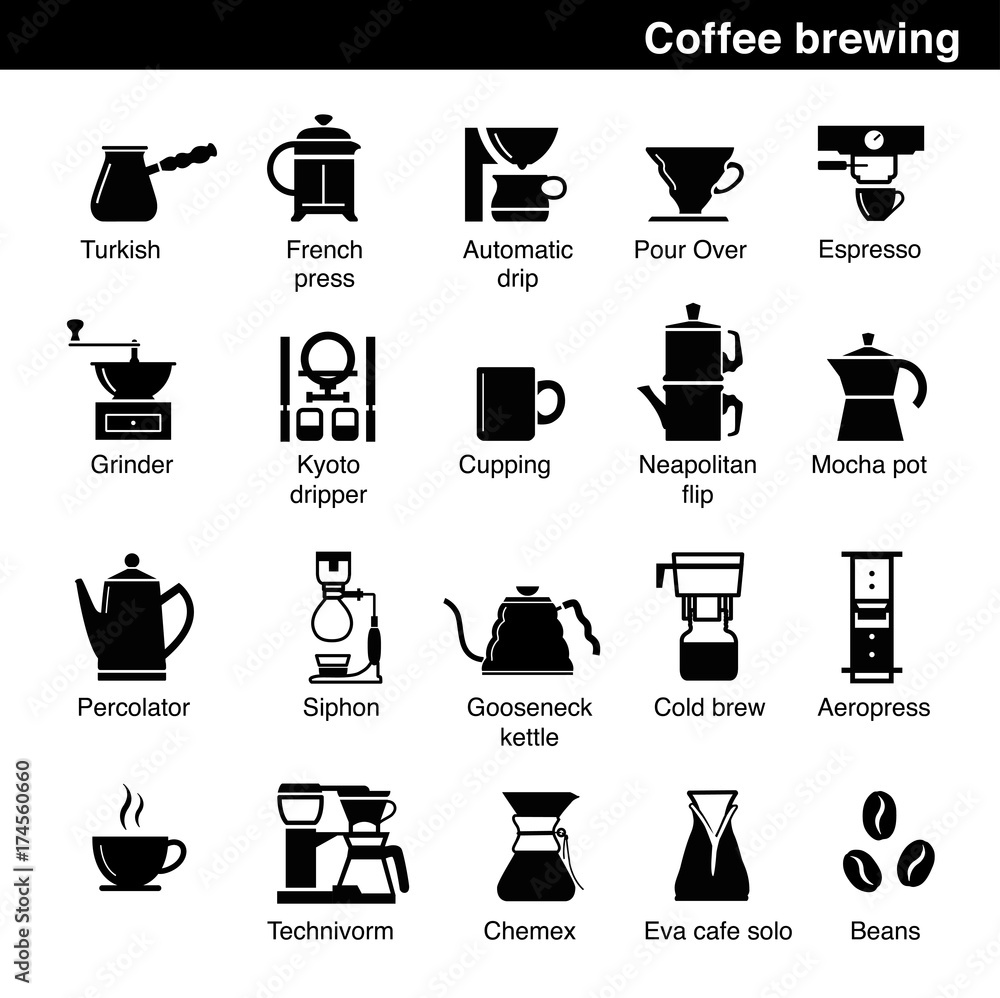Finding the Art of Coffee Brewing Methods: Tips for each Lover
Finding the Art of Coffee Brewing Methods: Tips for each Lover
Blog Article
The Science Behind Coffee Developing: Just How Temperature Level and Time Affect Your Drink
Comprehending the science behind coffee brewing reveals that temperature level and time are not plain variables yet essential aspects that dictate the beverage's taste account and general quality. The optimal developing temperature level normally falls between 195 ° F and 205 ° F, while the period of removal varies significantly throughout various methods. This interplay of variables can lead to a cup that is either delightful or unsatisfactory. As we explore the subtleties of these aspects, the question arises: just how can one efficiently balance temperature level and time to accomplish that perfect mixture?
The Chemistry of Coffee Removal
The chemistry of coffee extraction digs right into the complex processes that change raw coffee beans right into the aromatic drink delighted in worldwide. This makeover mostly entails the solubility of different substances present in the beans, which are influenced by variables such as grind dimension, water top quality, and the brewing technique utilized.
Throughout the brewing process, warm water acts as a solvent, drawing out soluble substances, including caffeine, lipids, sugars, and acids, from the coffee premises. Each substance adds to the flavor profile, scent, and body of the last drink. Acids are responsible for intense and tangy notes, while oils contribute to a rich mouthfeel.
The initial stages of developing remove acids and sugars, leading to a positive level of acidity, while extended extraction can lead to bitterness due to over-extraction of unwanted substances. Comprehending these chemical interactions is essential for optimizing developing methods, as the balance in between removal time and water temperature level can significantly affect the general quality of the coffee.
Ideal Developing Temperatures
Discovering the right developing temperature is important for opening the complete potential of coffee tastes and scents - coffee brewing methods. Research shows that the ideal range for developing coffee lies in between 195 ° F to 205 ° F(90 ° C to 96 ° C) Within this variety, the removal process effectively liquifies the desirable soluble substances in coffee beans, resulting in a savory and balanced mug
Brewing at reduced temperatures, such as listed below 195 ° F(90 ° C ), may cause under-extraction, yielding an acidic and weak brew with low-key flavors. Alternatively, brewing at temperature levels exceeding 205 ° F(96 ° C) can cause over-extraction, producing a severe and bitter preference due to the extreme dissolution of undesirable compounds, such as tannins.
In addition, the optimal developing temperature can vary depending on the coffee bean kind and roast level. For example, lighter roasts commonly benefit from a little higher temperatures to improve their complicated taste profiles, while darker roasts might be better fit to reduced temperatures to mitigate resentment.
Ultimately, keeping accuracy in developing temperature levels is essential for accomplishing an unified balance of flavors, making sure that every mug of coffee provides a gratifying sensory experience.
Influence of Developing Time
Brewing time plays a critical duty in figuring out the taste account and total high quality of you could check here coffee. Much shorter developing times can result in under-extraction, leading to a sour or weak flavor, as not adequate soluble compounds are liquified.
Ideal brewing time varies relying on the approach utilized and the grind dimension of the coffee. A French press usually requires regarding four mins, while espresso removal is typically completed within 25 to 30 seconds. It is important to calibrate developing time in conjunction with various other variables, such as water temperature and coffee-to-water ratio, to achieve the wanted taste profile.
Understanding the effect of brewing time allows coffee enthusiasts to refine their developing techniques, inevitably enhancing the sensory experience of their mug (coffee brewing methods). With careful interest to this variable, one can open the full capacity of the coffee, disclosing its distinct attributes and nuances
Brewing Techniques and Their Results

For example, techniques like French press and chilly mixture permit a much longer steeping time, causing a fuller body and durable taste as a result of raised removal of oils and soluble solids. Alternatively, coffee developing makes use of high stress and a much shorter removal time, creating a focused shot that highlights intense flavors and a rich crema.
Pour-over techniques, such as Chemex or V60, offer an even more regulated removal process, allowing the maker to control flow rate and water distribution, which can enhance illumination and quality. Percolation approaches cycle water with the coffee grounds multiple times, leading to a more powerful, commonly bitter flavor.
Lastly, using paper filters versus steel filters can likewise impact the last preference; paper filters usually generate a cleaner mug by capturing oils and fine bits, while steel filters permit more oils to go through, adding to a fuller mouthfeel - coffee brewing methods. Comprehending these nuances can elevate the coffee experience considerably
Tips for Improving Your Brew
A well-executed brew can transform also the easiest coffee into a remarkable experience. To attain this, interest to information is necessary. Begin with high-quality, fresh roasted beans, as their taste profile lessens gradually. Grind the beans right before brewing to check my blog maximize freshness, ensuring the grind dimension matches your brewing approach-- coarser for French press and finer for espresso.
Water high quality plays a crucial function; usage filtered water without contaminations. The optimal developing temperature ranges in between 195 ° F and 205 ° F(90 ° C to 96 ° C ) Also hot can burn the coffee, while also cool may under-extract tastes.
Timing is just as important. For immersion techniques, soaking for 3 to 5 mins is ideal, whereas drip approaches generally take around 5 mins. Trying out brew times to find your favored stamina.

Final Thought
In summary, the intricate partnership in between temperature and time is extremely important in the coffee brewing procedure. Understanding these scientific concepts empowers people to fine-tune their brewing strategies, eventually leading to a more enjoyable and well balanced coffee experience.
Comprehending the scientific research behind coffee developing reveals that temperature level and time are not mere variables yet critical components that dictate the drink's flavor account and overall quality. Recognizing these chemical interactions is crucial for enhancing developing methods, as the equilibrium between removal time and water temperature level can substantially affect the general top quality of the coffee.Brewing time plays an essential duty in figuring out the taste profile and general top quality of coffee. By focusing on these aspects-- bean top quality, grind size, water temperature, soaking time, and proportion-- you can elevate your coffee brewing procedure, resulting in a consistently exceptional mug.
In recap, the elaborate connection in between temperature and time is vital in the coffee developing process.
Report this page